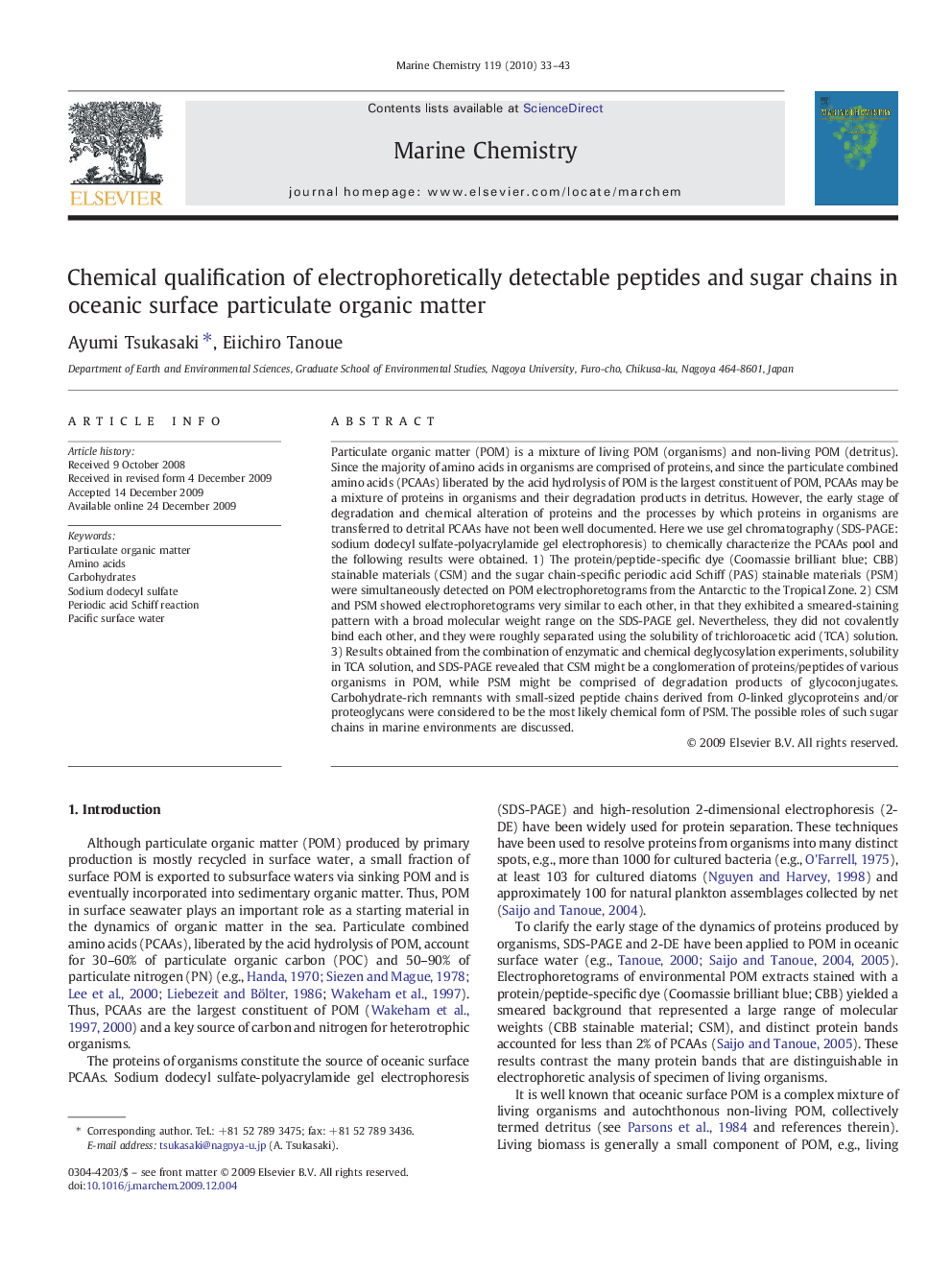| کد مقاله | کد نشریه | سال انتشار | مقاله انگلیسی | نسخه تمام متن |
|---|---|---|---|---|
| 1261751 | 1496705 | 2010 | 11 صفحه PDF | دانلود رایگان |

Particulate organic matter (POM) is a mixture of living POM (organisms) and non-living POM (detritus). Since the majority of amino acids in organisms are comprised of proteins, and since the particulate combined amino acids (PCAAs) liberated by the acid hydrolysis of POM is the largest constituent of POM, PCAAs may be a mixture of proteins in organisms and their degradation products in detritus. However, the early stage of degradation and chemical alteration of proteins and the processes by which proteins in organisms are transferred to detrital PCAAs have not been well documented. Here we use gel chromatography (SDS-PAGE: sodium dodecyl sulfate-polyacrylamide gel electrophoresis) to chemically characterize the PCAAs pool and the following results were obtained. 1) The protein/peptide-specific dye (Coomassie brilliant blue; CBB) stainable materials (CSM) and the sugar chain-specific periodic acid Schiff (PAS) stainable materials (PSM) were simultaneously detected on POM electrophoretograms from the Antarctic to the Tropical Zone. 2) CSM and PSM showed electrophoretograms very similar to each other, in that they exhibited a smeared-staining pattern with a broad molecular weight range on the SDS-PAGE gel. Nevertheless, they did not covalently bind each other, and they were roughly separated using the solubility of trichloroacetic acid (TCA) solution. 3) Results obtained from the combination of enzymatic and chemical deglycosylation experiments, solubility in TCA solution, and SDS-PAGE revealed that CSM might be a conglomeration of proteins/peptides of various organisms in POM, while PSM might be comprised of degradation products of glycoconjugates. Carbohydrate-rich remnants with small-sized peptide chains derived from O-linked glycoproteins and/or proteoglycans were considered to be the most likely chemical form of PSM. The possible roles of such sugar chains in marine environments are discussed.
Journal: Marine Chemistry - Volume 119, Issues 1–4, 20 April 2010, Pages 33–43